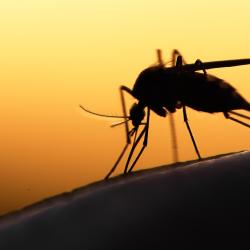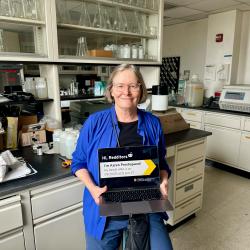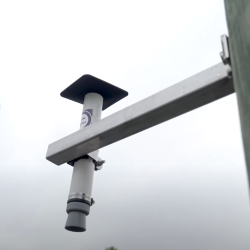Alumni Tipping the Balance
Chul “Eddy” Chung
Since graduating from UMD, Chul “Eddy” Chung, Ph.D. ’99, meteorology, has seen quite a bit of the world: he has held positions at Scripps Institution of Oceanography, the University of Helsinki in Finland and the Gwangju Institute of Science and Technology in his native South Korea. In 2015, Chung returned to the U.S. to accept a position at the Desert Research Institute in Nevada. His focus is reducing the uncertainty in climate change estimates by determining the relative contributions of black and brown carbon—particles of organic matter more commonly known as soot—resulting from the burning of fossil fuels and other organic matter. “These man-made aerosols absorb solar radiation and have particularly large impacts on regional climate,” Chung says.
Jennifer Jadin
Jennifer Jadin, Ph.D. ’09, behavior, ecology, evolution, and systematics, didn’t set out to work on climate. After completing her degree, she says she changed course because “climate change is arguably the most pressing environmental issue of the day. The government needs people who are capable of advising on it and advocating about it.” Jadin no longer does science research, but is engaged in policy work. She has applied her skills and knowledge at the U.S. Global Change Research Program, the U.S. Department of Agriculture and currently as climate change advisor for the United States Agency for International Development in Jakarta, Indonesia. “My job involves identifying ways the U.S. government can most effectively spend time, money and talent here to help make sure vulnerable people and landscapes can adapt to climate change,” Jadin says.
Junjie Liu
“Our climate is experiencing abrupt changes that have never been seen before because of increased fossil fuel emissions,” says Junjie Liu, M.S. ’05, meteorology; Ph.D. ’07, atmospheric and oceanic science. “However, only about half of the fossil fuel emissions remain in the atmosphere. Where have these fossil fuel emissions been absorbed?” Liu has been addressing this question for nearly a decade, first as a postdoctoral researcher at the University of California, Berkeley, and, since 2011, as a research scientist at NASA’s Jet Propulsion Laboratory. “My research combines observations from satellites with model simulations to quantify the carbon exchanges between the atmosphere and the ocean and land surfaces,” Liu says. “I am also interested in the impact of extreme climate events, such as drought, on the carbon cycle.”
C. Adam Schlosser
Astronomy is the field that first drew C. Adam Schlosser, M.S. ’92, Ph.D. ’95, meteorology, to study science as an undergrad. “I was quite interested in the vastness of space and the possibility of life elsewhere in the universe,” he says, noting that he also considered plasma physics research to join the quest for nuclear fusion as an alternative energy source. “Ultimately, I chose to study climate and global change because we must understand and preserve our planet by protecting all of our environments—natural, managed and built,” he says. Now at the Center for Global Change Science at the Massachusetts Institute of Technology, Schlosser’s primary interests are the modeling, prediction and risk assessment of natural and managed hydrologic and ecologic systems under global change.
Writer: Matthew Wright
See also:
- Tipping the Balance: Environmental Security in a Time of Scarce Resources and Conflicting Priorities: Drought in California. Floods in South Carolina. Receding polar ice and coastal dead zones. UMD researchers are taking the lead on these and other threats to environmental security.
- A Hub for Collaboration: A sidebar highlighting interdisciplinary centers and and institute at UMD that serve as hubs for collaboration with federal agencies and others within the academic community.
This article was published in the Spring 2016 issue of Odyssey magazine. To read other stories from that issue, please visit go.umd.edu/odyssey.







